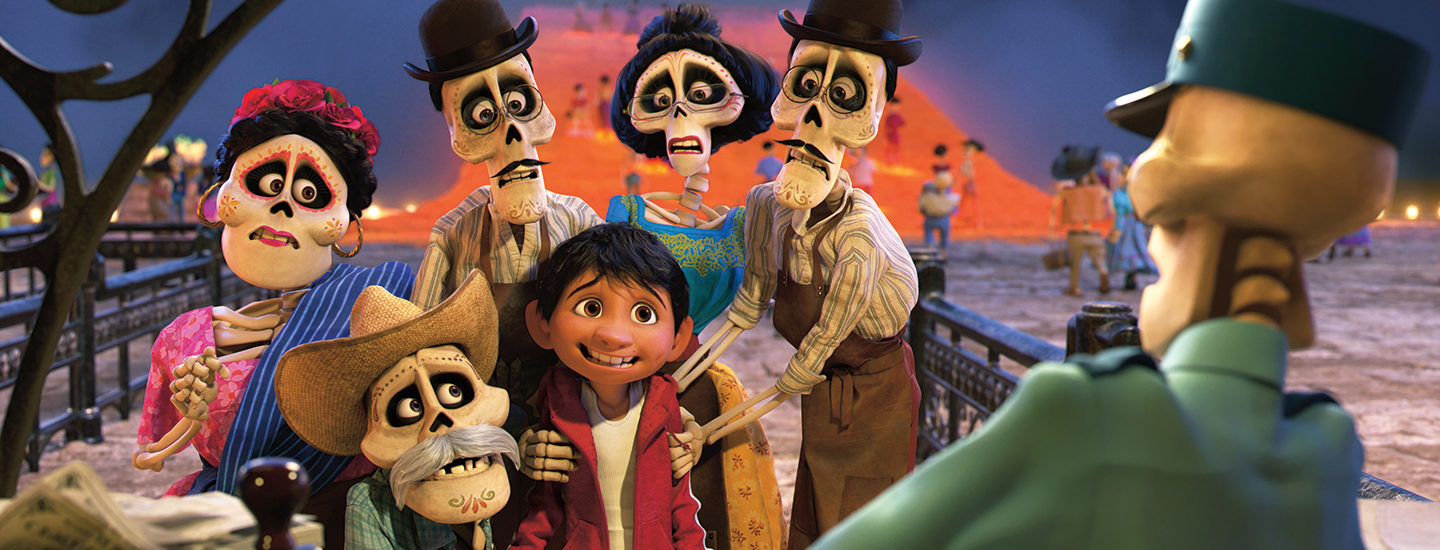Twelve-year-old Miguel lives in Mexico. One night, he’s celebrating the Day of the Dead, a holiday that honors deceased relatives. Suddenly, a gust of wind whisks him off to the underworld. He must find a way to return to the land of the living before it’s too late!
Miguel’s fictional journey is the focus of last fall’s hit Pixar film, Coco. It took a team of writers, artists, animators, and actors more than five years to make the movie. Every detail—from the wrinkles on Miguel’s great-grandmother’s face to the dancing skeletons in the Land of the Dead—was animated entirely on computers.
Alonso Martinez is a digital artist at Pixar. He used computers to build the characters in Coco and help them move on the big screen.
Twelve-year-old Miguel lives in Mexico. He’s celebrating the Day of the Dead one night. This holiday honors dead relatives. Suddenly, a gust of wind blows him away. It takes him to the underworld. He must return to the land of the living before it’s too late!
Miguel’s trip is a made-up story. It’s the focus of last fall’s hit Pixar film, Coco. Writers, artists, animators, and actors worked on the movie. It took them more than five years to finish. Everything was created on computers. That includes details like the wrinkles on Miguel’s great-grandmother’s face. It also includes the dancing skeletons in the Land of the Dead.
Alonso Martinez is a digital artist at Pixar. He used computers to build the characters in Coco. Then he helped them move on the big screen.

